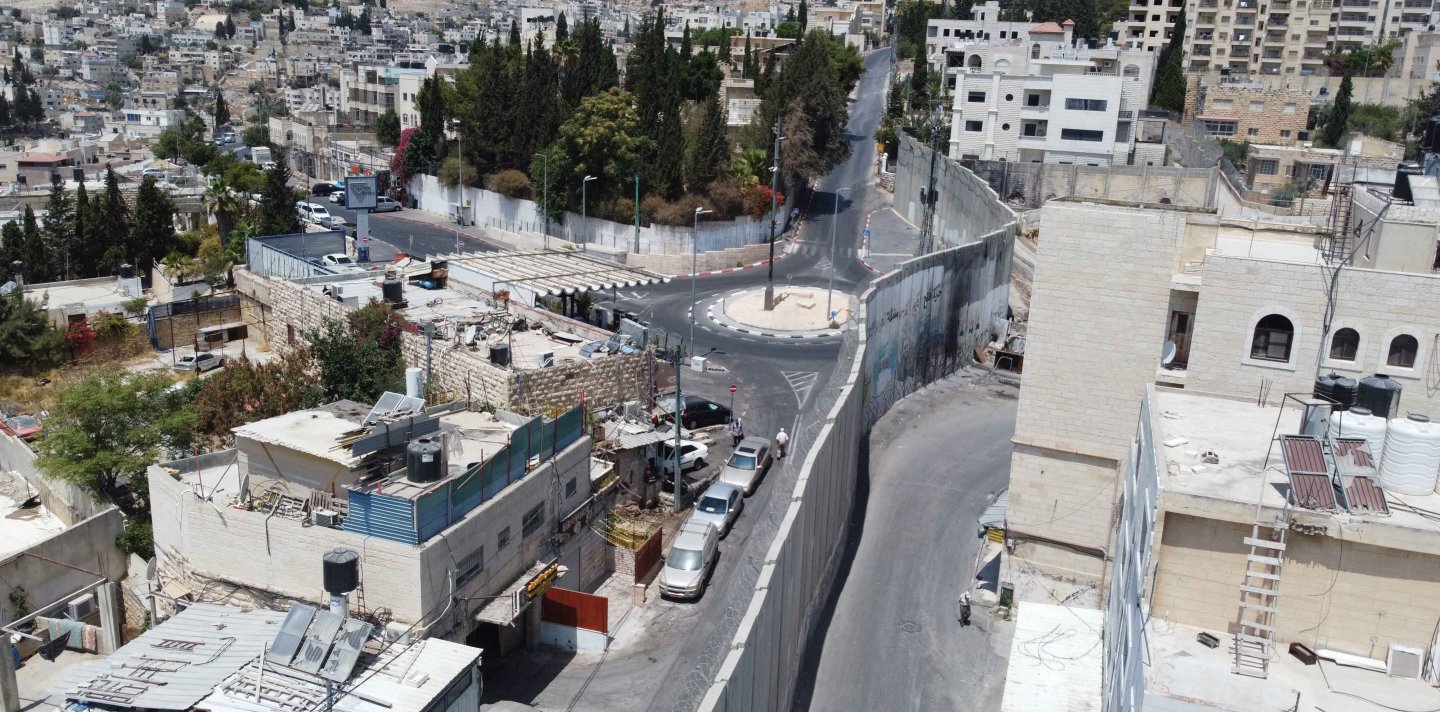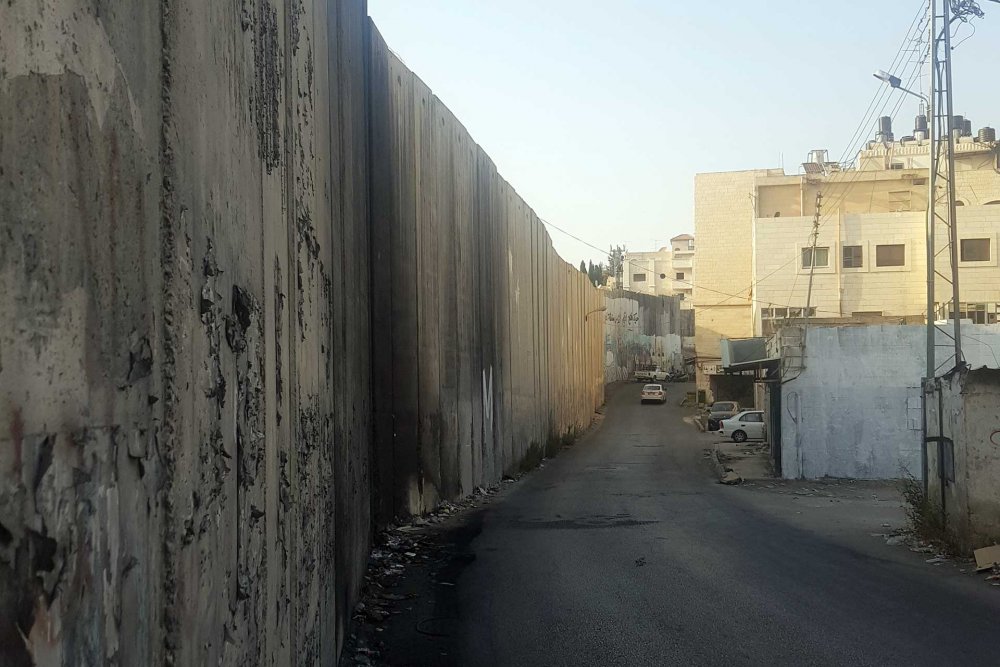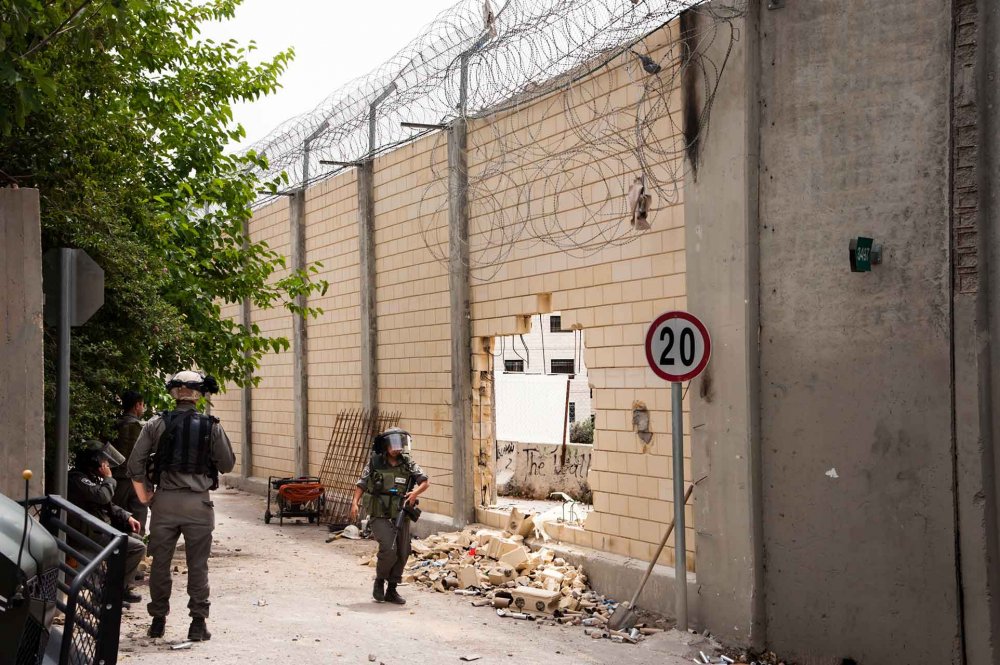To the east of Jerusalem, the adjacent Palestinian towns of al-‘Izariyya and Abu Dis, on the one hand, and al-Tur, and the Silwan neighborhoods of Ras al-Amud, al-Shayyah, and Jabal Mukabbir, on the other, are dissected by the Separation Wall. This section of the wall was approved in late 2003 and began to be built with concrete and stone walls in 2004. In 2015, when the last gap in the wall was closed, the residents of al-‘Izariyya and Abu Dis were completely shut away.
Al-‘Izariyya is just 3 km away from Jerusalem’s city center and is historically considered the “eastern gate” to Jerusalem, as it falls on the central route between Jerusalem and Amman through Jericho. Until the wall, the town had depended on Christian tourists visiting its religious sites, including the Church of Saint Lazarus. The wall shut residents of al-‘Izariyya out from the city and its surroundings to the west. Outside the wall, and largely under the designation of Area B, only very small parts of the town fall under the jurisdiction of the Jerusalem municipality. Walling off the town also dried up the town’s tourist influx.



